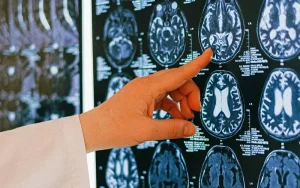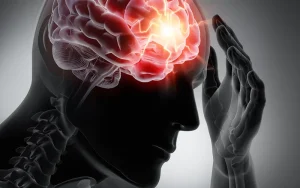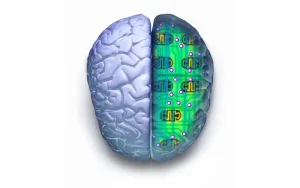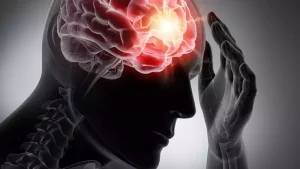Each year, about 1.5 million Americans survive traumatic brain injuries, with outcomes varying greatly. These injuries can lead to issues like loss of coordination, depression, and difficulty concentrating, while also increasing the risk of future dementia.
Recognizing the lack of treatments for this widespread condition, a team of scientists at Gladstone Institutes delved into how traumatic brain injuries trigger neurodegeneration and how to halt this process to prevent long-term damage.
“We aimed to understand what happens in the brain post-injury, sparking the destructive process that harms neurons,” says Jae Kyu Ryu, PhD, a scientific program leader at Gladstone Institutes.
Most traumatic brain injuries result from falls, car accidents, or assaults, with some stemming from sports mishaps or military operations. In each case, the external force can cause brain movement within the skull, leading to breakdowns in the blood-brain barrier.
“We discovered that a specific blood protein, fibrin, plays a causative role in brain damage post-injury,” says Ryu, who led the study published in the Journal of Neuroinflammation.
Ryu and his colleagues in Akassoglou’s lab have long studied how leaked blood in the brain triggers neurological diseases by disrupting the brain’s immune system. Fibrin, a protein aiding blood coagulation, emerges as the key player.
In conditions like Alzheimer’s and multiple sclerosis, abnormal breaches in the protective blood-brain barrier permit fibrin to infiltrate areas governing cognitive and motor functions, leading to neurodegeneration. However, in traumatic brain injury, the injury itself induces blood leakage into the brain. A novel study has unveiled that fibrin plays a pivotal role in converting beneficial immune cells into harmful ones, triggering detrimental inflammation and releasing toxins that harm neurons.
Employing cutting-edge imaging technology, the Gladstone team scrutinized mouse and human brains affected by traumatic brain injury. They generated three-dimensional images of intact mouse brains, revealing blood-brain barrier breaches and significant fibrin accumulation in traumatic brain injury cases. Notably, fibrin coexisted with activated immune cells in both mouse and human brains.
“It became evident that fibrin activates these immune cells,” Ryu explains. “We recognized that we could mitigate the harmful effects by inhibiting fibrin, but it required precise intervention.”
The team utilized genetic tools featuring a specific fibrin mutation capable of preventing its activation of immune cells while preserving the protein’s essential blood-clotting functions. This is particularly crucial for traumatic brain injuries, where excessive bleeding into the brain may result, especially among patients using anticoagulant medications prior to the injury.
Previously, Akassoglou’s lab developed a drug—a therapeutic monoclonal antibody—targeting only fibrin’s inflammatory properties, leaving its blood coagulation unaffected. This fibrin-targeting immunotherapy has demonstrated protective effects against multiple sclerosis and Alzheimer’s disease in mice. Therini Bio has initiated Phase 1 safety clinical trials for a humanized version of this pioneering fibrin immunotherapy.
“It’s promising to have a therapeutic option capable of neutralizing blood toxicity in neurological diseases,” Ryu remarks. “Further research is necessary to assess the efficacy of fibrin immunotherapy in traumatic brain injury.”
“This study introduces a potential novel approach to mitigate the devastating consequences of brain injuries,” notes Lennart Mucke, MD, director of the Gladstone Institute of Neurological Disease. “Brain injuries can profoundly impact cognitive function, emotional well-being, and motor abilities, affecting every aspect of an individual’s life. Exploring whether blocking fibrin’s disease-promoting effects can enhance surgical outcomes and reduce disability post-traumatic brain injuries warrants further investigation.”
Read More: Head injuries may increase the risk of brain cancer










